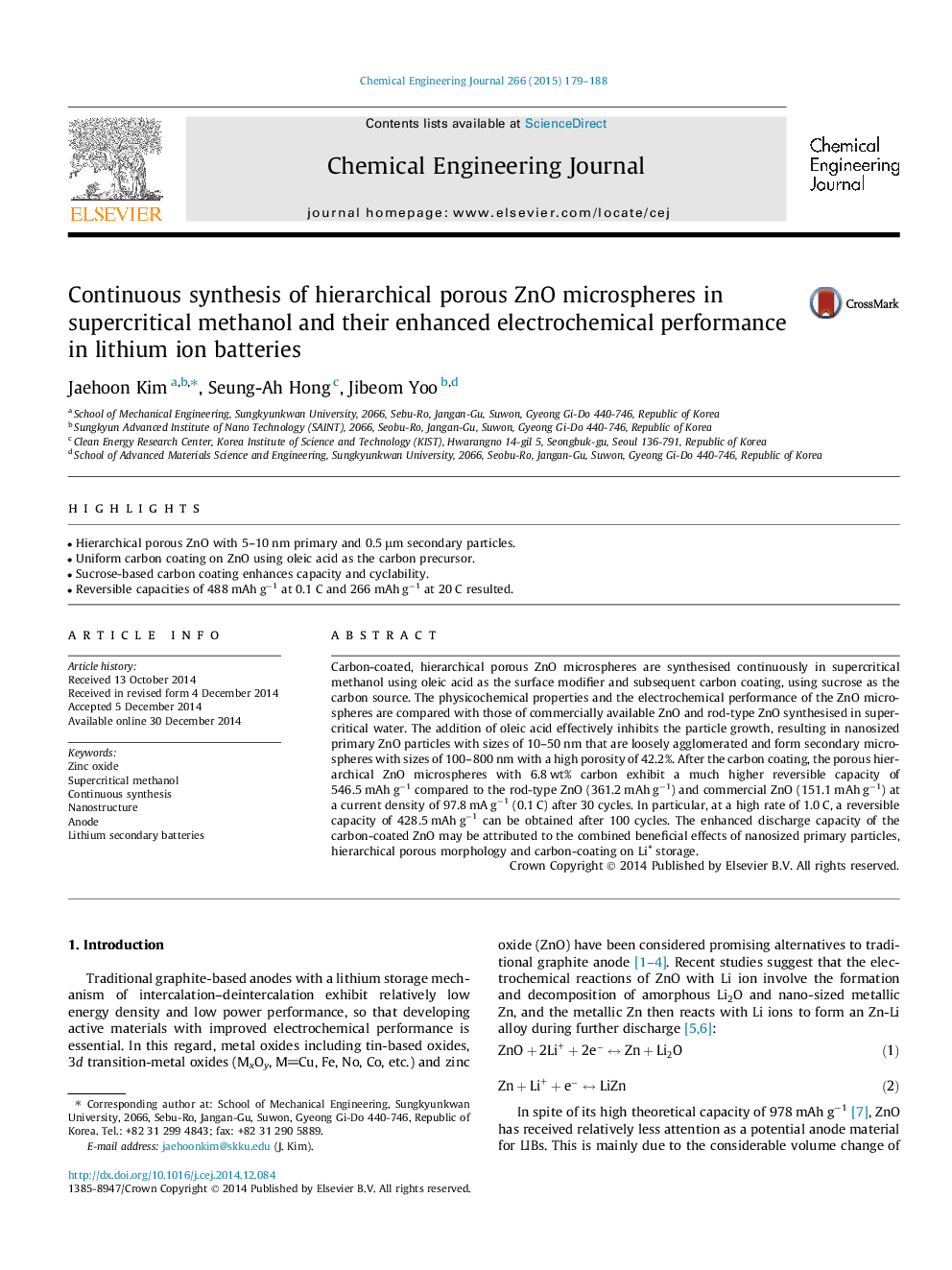| Article ID | Journal | Published Year | Pages | File Type |
|---|---|---|---|---|
| 6585196 | Chemical Engineering Journal | 2015 | 10 Pages |
Abstract
Carbon-coated, hierarchical porous ZnO microspheres are synthesised continuously in supercritical methanol using oleic acid as the surface modifier and subsequent carbon coating, using sucrose as the carbon source. The physicochemical properties and the electrochemical performance of the ZnO microspheres are compared with those of commercially available ZnO and rod-type ZnO synthesised in supercritical water. The addition of oleic acid effectively inhibits the particle growth, resulting in nanosized primary ZnO particles with sizes of 10-50 nm that are loosely agglomerated and form secondary microspheres with sizes of 100-800 nm with a high porosity of 42.2%. After the carbon coating, the porous hierarchical ZnO microspheres with 6.8 wt% carbon exhibit a much higher reversible capacity of 546.5 mAh gâ1 compared to the rod-type ZnO (361.2 mAh gâ1) and commercial ZnO (151.1 mAh gâ1) at a current density of 97.8 mA gâ1 (0.1 C) after 30 cycles. In particular, at a high rate of 1.0 C, a reversible capacity of 428.5 mAh gâ1 can be obtained after 100 cycles. The enhanced discharge capacity of the carbon-coated ZnO may be attributed to the combined beneficial effects of nanosized primary particles, hierarchical porous morphology and carbon-coating on Li+ storage.
Keywords
Related Topics
Physical Sciences and Engineering
Chemical Engineering
Chemical Engineering (General)
Authors
Jaehoon Kim, Seung-Ah Hong, Jibeom Yoo,
